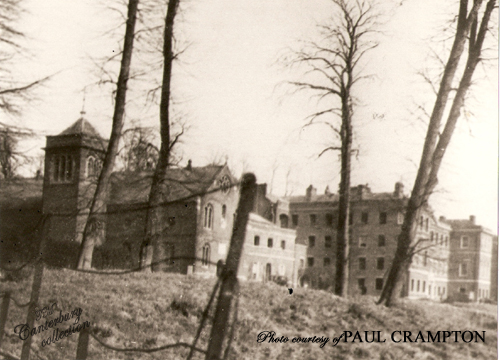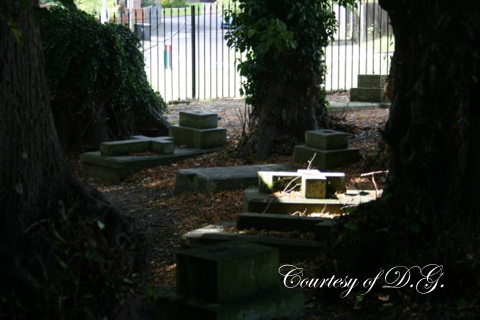
![]()
~ HALE'S PLACE ~
ST. STEPHEN'S ROAD, Hackington
And the HALE family
There are Hales Family Estate Records (1250-1868) available at the Canterbury Cathedral Archives CCA-U85, including title deeds, account books, financial papers, plans of Hales Place, charters and deeds, leases, etc. "A notice that steel traps will be placed in all accessible parts of the grounds of Hales Place to prevent public access c. 1800", a copy of a lease of Hales Place 1789

Hales Place c. 1794
This costly and magnificent structure, which stands in the parish of Hackington, or St. Stephen's about a mile from Canterbury was first began in 1768, and in a few years attained its present elevation, but has not yet received all the embellishments and improvements intended by its owner, or that its pleasant and healthy situation so eminently merits. The building is of the Ionic order, of very handsome brickwork, with Portland stone jambs and cornices; of a fine height, and extends 538 feet in length, having a terrace and spacious lawn in front. It commands a most beautiful view of the city of Canterbury, its cathedral, and the neighbouring country. The adjoining grounds and park are finely diversified with hill and dale, and contain many agreeable walks and thriving plantations.
The original house was called "Place House" * "...A little further is the village, situated round St. Stephen's Green, having on one side Sir Roger Manwood's alms-houses, and at a little distance on the opposite side of the church, adjoining to the church-yard westward, stood the old Place house, pulled down by Sir Edward Hales some years ago, adjoining to which on the further side of the hill, are the gardens, park, and mansion of Hales place, from the terrace of which there is a most beautiful view of Canterbury, the Cathedral, and the neighbouring country round it."
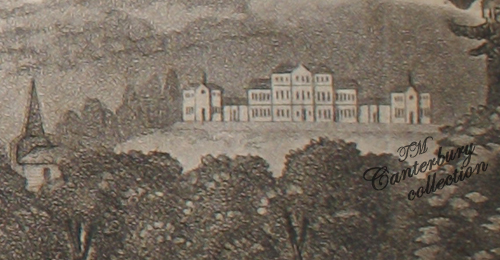
Detail from a drawing in Hasted, showing Hales Place and St. Stephen's Church on the left
Thomas MONINGES, of the city of Canterbury, co. Kent, esq., and Mary Hales, spinster of the City of London, daughter of Charles HALES, of the said city of Canterbury, esq., gen. lic., 22 May, 1595. B. London Marriage Licences 1521-1869
1770 Sept 26th, death of Lady of Sir Edward HALES, Bart. of Sisterton*, Canterbury. GMv40 (should read St. Stephen's)
"More fit for the residence of a monarch than for a simple country gentleman." Cozens c. 1773
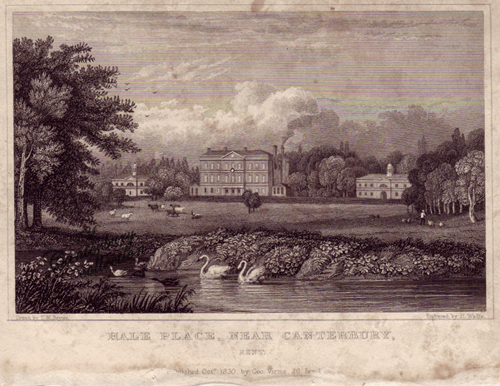
Drawing of Hale Place, near Canterbury, drawn by T. M. Baynes, engraved by H.Wallis published October, 1830 by Geo. Virtue, in my collection
"This mansion stands in the parish of St. Stephen's, otherwise Hackington, in the hundred of Westgate near Canterbury. The gardens, park and site of Hales Place, occupy the rise of the hill, and from the terrace is a most beautiful view of the metropolitan city of Kent, with the venerable cathedral and surrounding picturesque country. On the spot occupied by the residence in question originally stood a structure, called the Place House, the property of Sir John Manwood, gentleman of the privy-chamber to James the First, and lieutenant-governor of Dover Castle. He, in 1637, alienated the house and estate to colonel Thomas Colepeper, afterwards knighted, who resided here, and died, holding the property, in 1643, when he was buried in the church of St. Stephen. His only son, Thomas Colepeper, esq. in 1675, sold the property to E. Hales, esq. eldest son of sir Edward Hales, bart., of Tunstall, who resided at the Place House, and in 1768, procured the king's licence to form a park, as the ancient one had for some time previous been disparked; who, having been first knighted by James the Second, afterwards succeeded by his father in the baronetcy. Since that period the estate devolved to his great grandson, Sir Edward Hales, bart., who many years back pulled down the ancient Place House, and erected for his residence the present edifice, a small distance northward; the mansion being in every aspect worthy of the family to whom the estate descended."
"Sir Edward Hales was imprisoned in Maidstone jail for about a year, and then rejoined James II in France. He was impeached by the House of Commons, as appears by their journals, 26 Oct. 1689, and was adjudged a traitor. He died in 1695, and is buried at St. Sulpice, in Paris.
Understanding that there was a monument erected to his memory, I took the liberty of applying to the present cure of that church, M. Meritan, who obligingly informs me that the church having been entirely rebuilt since 1695, the monument, if ever there was one, no longer exists.
Before finally taking leave of Sir Edward, I may mention that King James II created him Earl of Tenterden and Viscount Tunstall - titles which were not recognized by William and Mary. The patent thereof is in the possession of my relative, Miss M. B. F. Hales, lately of Hales Place, Canterbury, who obligingly shewed it to me there in 1879.
The third baronet was succeeded by his second surviving son, Sir John Hales. Of him I have very little to say, except that he was offered a peerage by George I, but declined it, because he was not allowed to claim the Earldom of Tenterden. He died, after a somewhat strange life, in 1744, and was buried at Tunstall.
His grandson, the fifth baronet, Sir Edward Hales, of Woodchurch, succeeded him and died in 1802, and he was succeeded by his son, Sir Edward Hales, sixth and last baronet, who married in 1789 Lucy, daughter of Henry Darell of Calehill. When he died issueless in 1829, the baronetcy became extinct, and his extensive estates devolved eventually upon his great-niece, Mary Barbara Felicite, granddaughter of his sister, Madame de Morlaincourt, whose son assumed the name of Hales.
It may not be out of place to record, that although the immediate male descendants of the first baronet are all deceased, the old family, which was settled for centuries in the neighbourhood of Tenterden, is not extinct, but is now represented by the humble individual who writes this paper.
The first baronet had two brothers, the elder of whom, William Hales of Bowley and Chilston (a place now owned by Aretas Akers-Douglas Esq., M.P., a member of our Society), was married to Margaret, daughter of Ralph Heyman, of Tenterden. His elder son John, being impecunious, sold those estates to the baronet's family. The descendants of William Hales, of Bowley and Chilston, subsequently became so much reduced, that Samuel Hales, his great-grandson (who seems to have visited at Hales Place in early life), was obliged to go to sea, as a ship's carpenter. He died at sea, on board H.M.S. "Suffolk" in 1695. Subsequently, the fortunes of this branch of the family considerably revived, and Major James Hales, my father, was of the opinion that this Samuel was a descendant of Samuel Hales, of Chilston, a son of the first baronet, Sir Edward. A rigid examination shews that this is not so. For the sake of my children, I have had the most searching inquiry made, and the result of it proves that we are descended in a direct line from William Hales of Bowley and Chilston, next surviving brother of the first baronet Sir Edward Hales.
The pedigree of this branch of the family has been officially investigated by the present Chester Herald (Mr. C. Murray Lane), who is the Registrar of the College of Arms. He certifies that the following sketch of it is correct:
Edward Hales = Margaret Honeywood
Other Issue.......William Hales of Tenterden = Elizabeth, daughter of Paul Johnson, of Nethercourt in Thanet
etc......
Archaeologia Cantiana 1882

A detail from the 1843 Felix Summerly map show "Hales Place", the chapel and St. Stephen's Church
October 1802, died at Hales Place, near Canterbury, in his 78th year, after a few day's illness, Sir Edward Hales, bart. He is succeeded in his titles and estates by his eldest son Edward Hales, Esq. The Monthly Magazine 1802
1820 - Died at Hales Place near Canterbury, the Rev. J. Crosby, Chaplain to Sir Edward HALES, a Clergyman of the Catholic persuasion, highly esteemed by all his friends and particularly by those of his congregation. NMM v.12
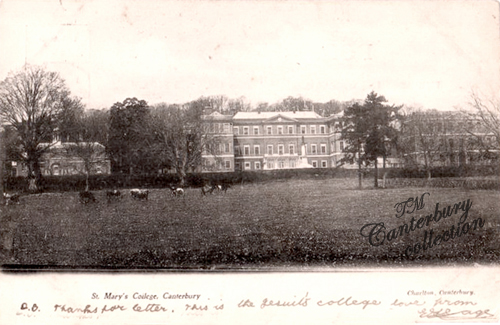
"New Place House", rebuilt in 1769 as Hale's Place - Shown above as St. Mary's College (bought by the Jesuits in 1880)
"A suite of Carmelite conventual buildings, comprising church, convent, and farm offices, after designs by Pugin, on a site of thirty acres, within a high brick wall enclosure, to cost £34,354 for the building alone, was contracted for in 1863 by Miss Hales, proprietress of Hales Place estate (on which the Royal Agricultural Society of England held their show in 1860), to be erected on her own grounds and at her own expense."
The estate was put up for auction in 1880, and the mansion house was purchased by the Jesuits for £24,000 (St. Mary's College)
c. 1924 the Jesuits returned to France, and the buildings were demolished c. 1928-1930
The property was then used to build houses
Showing Hales Place before it's demolition, with the Catholic Chapel on the left
Thank you to Paul Crampton for the loan of the photograph above
One of the altars from the chapel is now in a church in Southwark, London c. 1928 at the destruction of the site
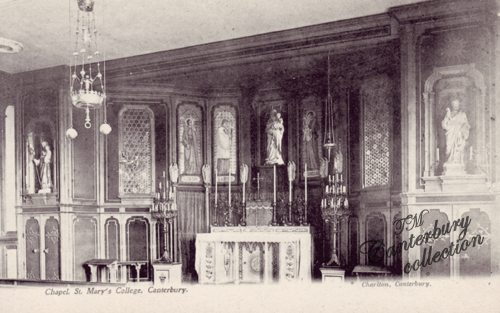

The manor belonged, in the 16th century to Sir Roger Manwood; and passed to the Colepepers and the Haleses. Hale's Place near the churchyard superseded a mansion of the Manwoods.
Sir John Manwood sold the estate to Col. Thomas Colepeper in 1637. It then passed to the Hales (E. Hales Esq.) family in 1675.
"His great grandson Sir Edward Hales, Bart. pulled down the ancient dwelling, and on the rise of the hill in the park erected a spacious brick mansion, which has a noble and majestic appearance, commanding delightful prospects. It is approached by an avenue of lofty poplars, and the grounds are richly beautified with woody scenery. It is the seat of Wm. C. Fairman, Esq." History and Gazetteer& Directory of Kent, Vo. II, 1847
A.D. 1746, the conduit kept near St. Andrew's Church was illuminated upon the marriage of a Sir Edward Hales. Eight years later the conduit was removed. John Brent
The property is located in St. Stephen's (Hackington) parish just outside of Canterbury. The original mansion was built here in 1758, in the Ionic style by Sir Edward Hales. He also built a private Roman Catholic chapel adjacent to the house.
*"The very foundations of the building, even the stone coffins of the religious and others in the cemetery, were carried away by another proprietor to be used in the erection of his mansion at Hales' Place."
*Talking about St. Augustine's Abbey
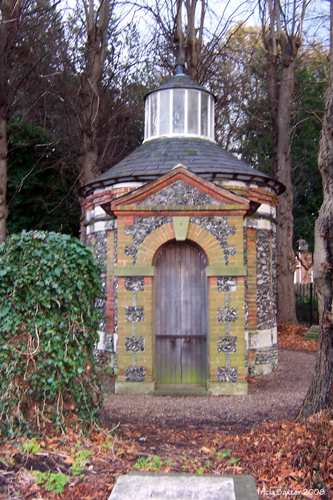 _
_
Hale's Place Roman Catholic Chapel. Was originally a Dove Cote and turned into a chapel c. 1850's.

The Rear of Hale's Place Roman Catholic Chapel, showing the Jesuit graves and the houses located now in the Hale's Estate.
The Fifth Baronet, Mary Barbara Felicity Hales and the Lady Frances Hales were all reburied here.
"The Catholic Chapel is a neat brick building, erected by Sir. Edward Hales, Bart., adjoining the mansion of Hales place. The altar, of various coloured marble, is very beautiful, and forms the tomb of the founder, who died August 29th, 1802; at the east end is a gallery for the family which communicates with the mansion. The Rev. H. J. Philips is the priest." History and Gazetteer& Directory of Kent, Vo. II, 1847
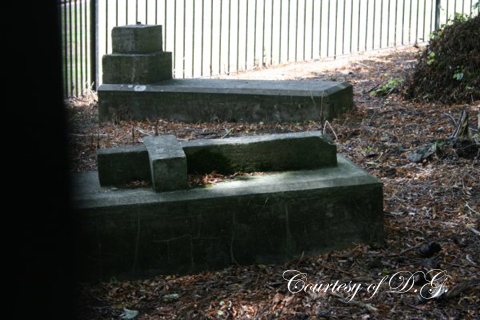
Sir Edward Hales sold land at Longport which belonged to his St. Augustine estate, which is where the Kent & Canterbury Hospital was built, and opened in 1793. The Cavalry Barracks in Sturry Road were built on land purchased from him in 1794.
Sir Edward Hales of Woodchurch (5th baronet) died on August 29th, 1802, at 78 years old.
Married 1807, Captain Edward Sanderson of The Buffs to Miss Harriet Hales, third daughter of the late Sir John Hales, bart. The Monthly Magazine 1807
Sir Edward Hales (6th baronet) died March 15, 1829, age 72.
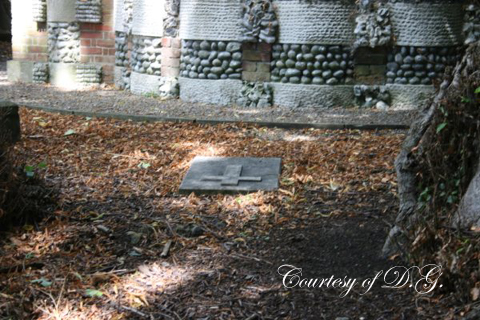
Obituary of Sir Edward Hales, Bart. (Gentlemen's Magazine 1829) - March 15. At Hales Place, near Canterbury, in his 72nd year, Sir Edward Hales, the sixth Baronet of Woodchurch in Kent. The ancient Roman Catholic family of Hales, of which we believe the deceased Baronet to have been the last male representative, was descended from Nicholas Hales, living in the reign of Edward the Third, whose son Robert was the Prior of St. John's Clerkenwell, and Lord High Treasurer of England, beheaded by Wat Tyler's mob in 1381. Fifth in descent from Nicholas was John Hales, Baron of the Exchequer, whose son Sir James, a Judge of the Common Pleas, was the only one on the bench who refused to sign the will of Edward the Sixth, which disinherited the Princesses Mary and Elizabeth. Third in descent from the Baron of the Exchequer was Sir Edward, who was advanced to a Baronetcy June 29, 1611, in the first year of the institution of that dignity. Sir Edward, his descendant in the seventh degree, was the only son of Sir Edward the fifth Baronet by Barbara, daughter and sole heiress of John Webb, esq. a younger son of Sir John Webb, of Odstock, Bart. He succeeded his father in the title in August 1802; and, having married in 1789 Lucy, second daughter of Henry Darell, of Colehill, esq. has left no issue. Of his three sisters, the eldest died a nun in 1811; and the others both married officers in the French Service.
Died, March 15. At Hales Place, near Canterbury, in his 72nd year, Sir Edward Hales, the sixth Baronet of Woodchurch in Kent.
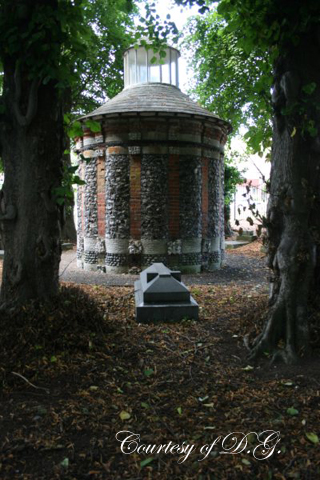 __
__
The ancient Roman Catholic family of Hales, of which we believe the deceased Baronet to have been the last male representative, was descended from Nicholas Hales, living in the reign of Edward the Third, whose son Robert was the Prior of St. John's Clerkenwell, and Lord High Treasurer of England, beheaded by Wat Tyler's mob in 1381. Fifth in descent from Nicholas was John Hales, Baron of the Exchequer, whose son Sir James, a Judge of the Common Pleas, was the only one on the bench who refused to sign the will of Edward the Sixth, which disinherited the Princesses Mary and Elizabeth. Third in descent from the Baron of the Exchequer was Sir Edward, who was advanced to a Baronetcy June 29, 1611, in the first year of the institution of dignity.

Sir Edward, his descendant in the seventh degree, was the only son of Sir Edward the fifth Baronet by Barbara, daughter and sole heiress of John Webb, esq., a younger son of Sir John Webb, of Odstock, Bart. He succeeded his father in the title in August 1802; and having married in 1789 Lucy, second daughter of Henry Darell, of Colehill, esq. has left no issue. Of his three sisters, the eldest died a nun in 1811; and the others both married officers in the French Service.
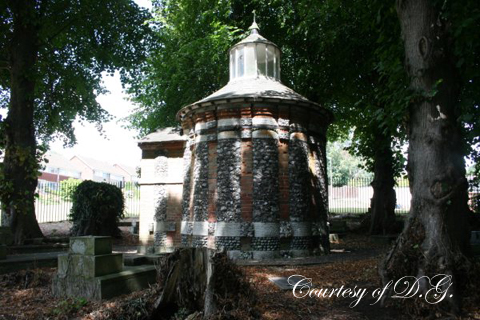
---------------
The title passed to his sister Mary's son Edward de Morlaincourt who changed his name to Hales.
Edward married Edmee Nicole Felicite Pulcherie de Sercey, daughter of Vice-Admiral, the Marquis de Sercey.
Their daughter Mary Barbara Felicity Hales was born in Boulogne, France, on December 4, 1835.
Edward Hales (de Morlaincourt) died on Feb 12, 1837, at his residence near Paris. Mary Barbara Felicity Hales inherited the property in 1837 when she was just a child.
In 1847 we have William C. Fairman, Esq. living here.
"Died, May 25th, At Dover, aged 85, Barbara De Jonchere, sister of the late Sir E. Hales, Bart. of Hales Place, near Canterbury her husband was a French Officer." The Gentlemen's Magazine 1848
In 1851 there is a Felicia Hales, widow and annuitant, and daughter M. B. F. Hales living at 4 Victoria Place in St. Dunstan's Ward, Canterbury, she was born in France about 1806, and her daughter in Boulogne, France 1835, both are British Subjects. They have a John A. Gross, friend who is a Roman Catholic Priest from Moselle Former, France staying with them.
In 1855 we have a Mrs. & Miss Hales living here
1856 The Catholic Directory, Ecclesiastical Register, Robert Simpson, Hale's-place, Canterbury
A Miss Hales living here in 1858
In 1858 Mary Barbara Felicity Hales entered a French Carmelite convent and took simple vows, in 1859 she became Sister Mary Clare. She wished to build a convent at Hales place.
"Hales' Place, the seat of the ancient family of Hales - (King James' devoted adherent was an ancestor) - is most imposing of all. The now only representative of the family is a lady, who in the spring time of her life has forsaken the active world to join the sisterhood of the Carmelites. A short distance below the Mansion, which stands on the face of a hill, is the Church of St. Stephen's and its Churchyard, a sweet and secluded spot, such as Gray (who by some is supposed to have written his Elegy near Canterbury) might have composed in. Canterbury in the Olden time, John Brent 1860
Death, December 23. At her residence, Montagu sq., aged 89, Lady Lucy, relict of Sir Edward Hales, bart., of Hales-place, Kent. Annual Register 1860
1861 - Hales Place - only residents - Joseph Blou?, Elizabeth Matthews, Mary E. Wiggins and John Horan? - Servants & Carter
1861 Thomas Richardson, Roman Catholic Priest, Burgate St. and Hales Place
In 1863 she began work on her convent at Hales place, it was never finished.
"Canterbury - Miss HALES, the proprietress of the Hales Place Estate, Canterbury, on which the show of the Royal Agricultrual Society England was held in 1860, entered a French convent some time ago. She has returned home, intending to build a convent on her own estate and at her own expense. The site, 30 acres in extent, has been marked out, and plans of the conventual buildings have been prepared by Mr. Pugin of Ramsgate, architect. The proposed buildings, which consist of a church, convent, farm-bulidings, &c. are to be inclosed within a high brick wall; and the contract for the buildings alone is 34,354l. The Builder vol 21 (Dec 19, 1863)
(November 14, 1863) Tenders *for Carmelite Convent and Church Hales place, canterbury for Miss Hales. Mr. E. Welby Pugin, architect. Quantities supplied by Mr. S. Marples
Smith 32697
Wilson 28174
I'Anson 27395
Gascoigne 26811
Bird 23997
Cowland 22941
Smith and Son 22879
Greengate 22500
Spooner 22166
Henderson 22100
For farm buildings, boundary wall and cottages. Mr. E. Welby, architect
I'Anson 6874
Bird 6200
Wilson 6180
Smith & Son 5668
Cowland 5000
Henderson 4900
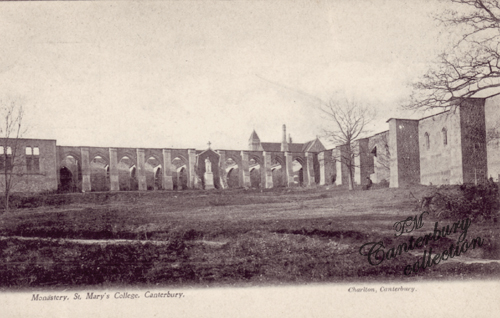
1870's Hales Mansion - Mary B. Hales, head, landowner 4434 acres, farmer of 900 acres, employing 14 men and 1 boy. Residing with her she has, 2 housemaids, a kitchenmaid, a gardener, 5 Benedictine Nuns, and 3 Lay sisters
Hales Mansion - Left Wing - Felicite Hales, widow, born Mauritius, annuitant, with her ladies maid Celine Favier of France
Hales Mansion - Right Wing - Auguste E Blouga? Roman Catholic Priest Hales, Gustave Motthya? Lay Brother Place Chapel, Henry Mattingley, Poultry Man, Domestic Servant
Hales Place Lower Garden - William Bahley, Head Gardener, Charles Edwards, Dan Galvin, gardeners and James Johnson Coachman
Hales Garden - James Calden, gardener (Scotland) and family
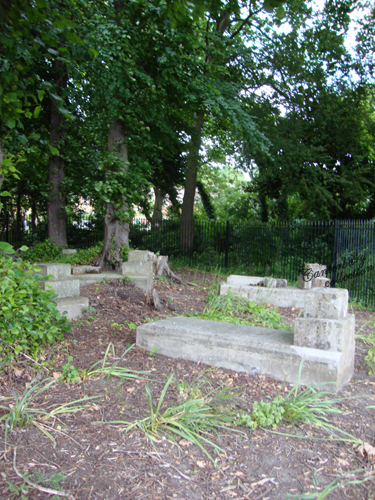
2 Upper Gardener's House - David Wallace, Butler (Ireland), and Joseph Mulliens, Gardener
1879 Miss Hales of Hales Place purchased 3 copies of the book Canterbury in the Olden Time by John Brent (from the list of subscribers)
The contents of the mansion were noted in August of 1880
1880 the mansion was sold to the Jesuit's, it was used as a school from 1880 to 1928
1881 Thomas B. English, age 25, Physician to College of Jesuits and Mary Hales Place Canlesla?, boarding at 4 Castle street in Canterbury with Caroline Morgan
1891 - Rev. Stanislaus Du Lac, superior of St. Mary's Catholic College, Hales Place
It was used as a military hospital during the first world war
1917 - Walter Haimes, Hales Place
In 1927 the property was sold to Mr. R. A. Dagnall, and in 1928 the contents of the estate were sold off
In 1928 the estate was sold and the house was demolished.

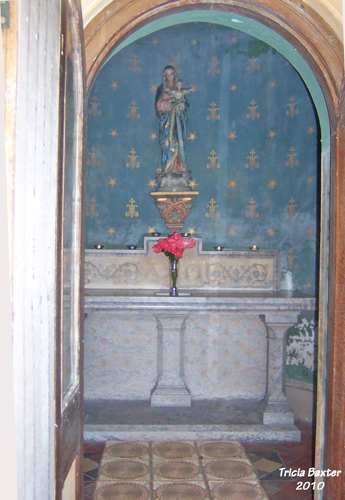
A view inside the funerary chapel of Hales Place
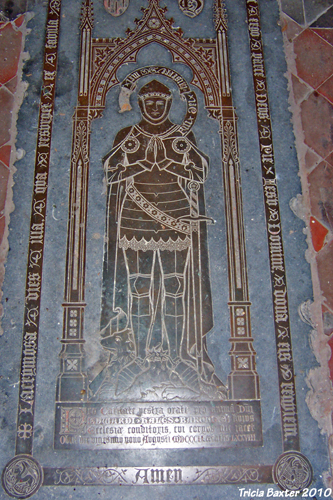
The brass to Baron Edward Hales, who died August 1802, at age 78
special thanks to Tricia for the above two photo's
Mary Hales presented two relics of St. Thomas to the St. Thomas's Church, these were from Gubbio in Umbria, Italy. One was a piece of the vestment and a piece of bone from the body.
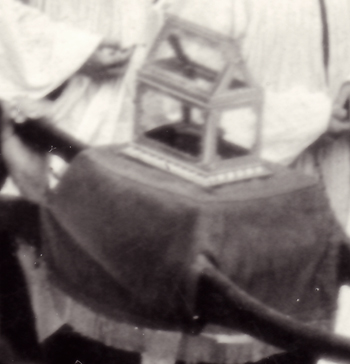
Mary Barbara Felicity Hales died at age 49, a very poor woman at Sarre Court, on April 18, 1885.
*Sir John Hales, great-grandson of the original builder of Hales Place lived at the Dungeon (Dane John)
*Sir Christopher Hales leased the Old Hospital of St. Laurence from the prioress and sisters in 1567, at the time the house was described as greatly decayed.
